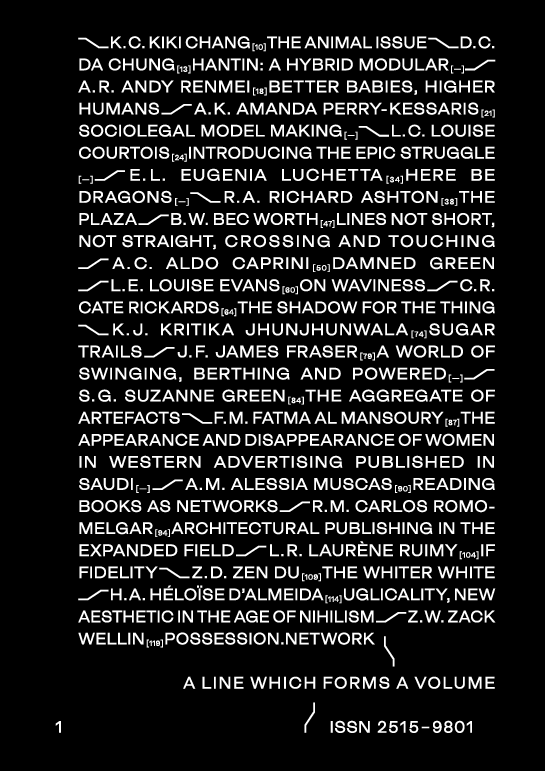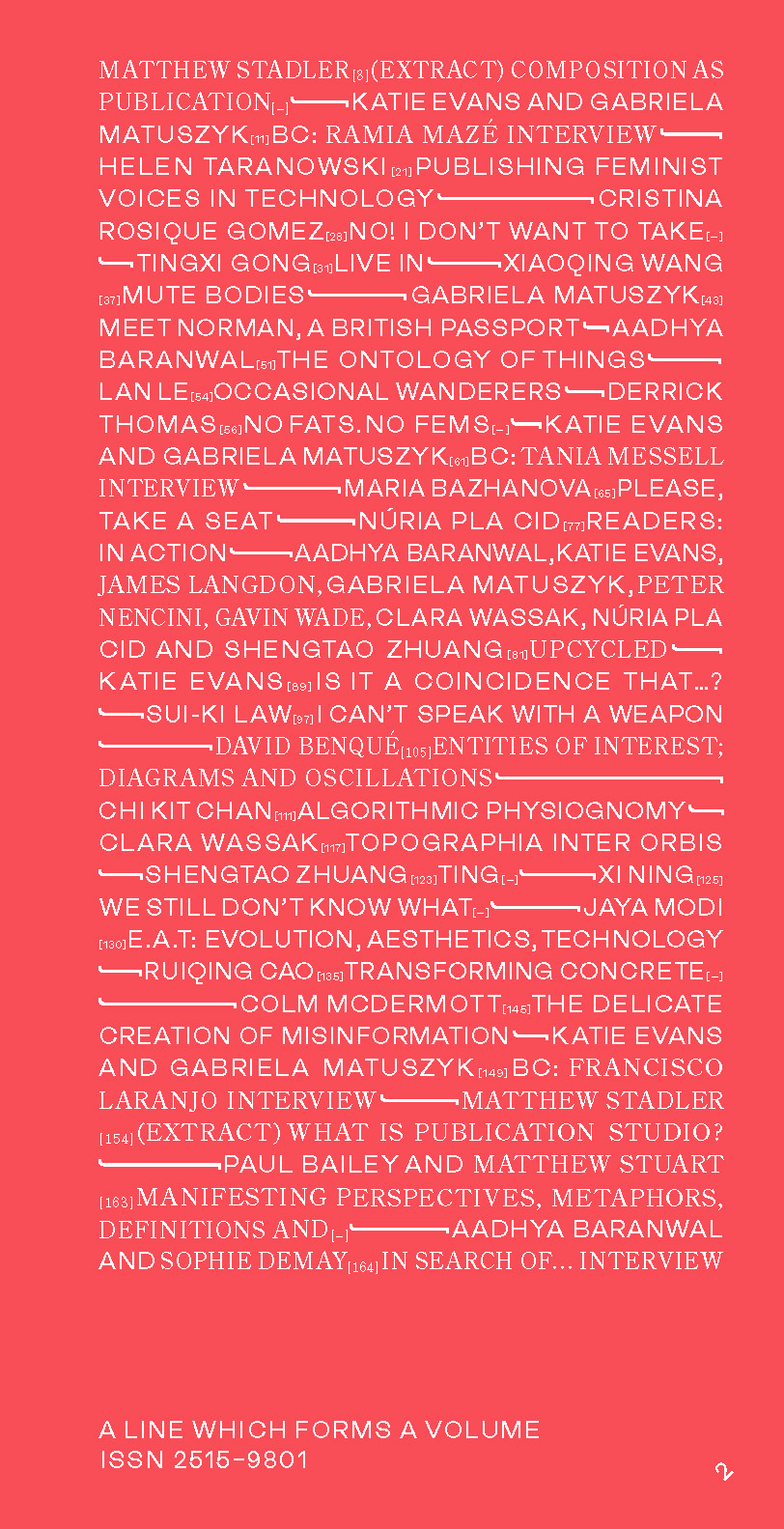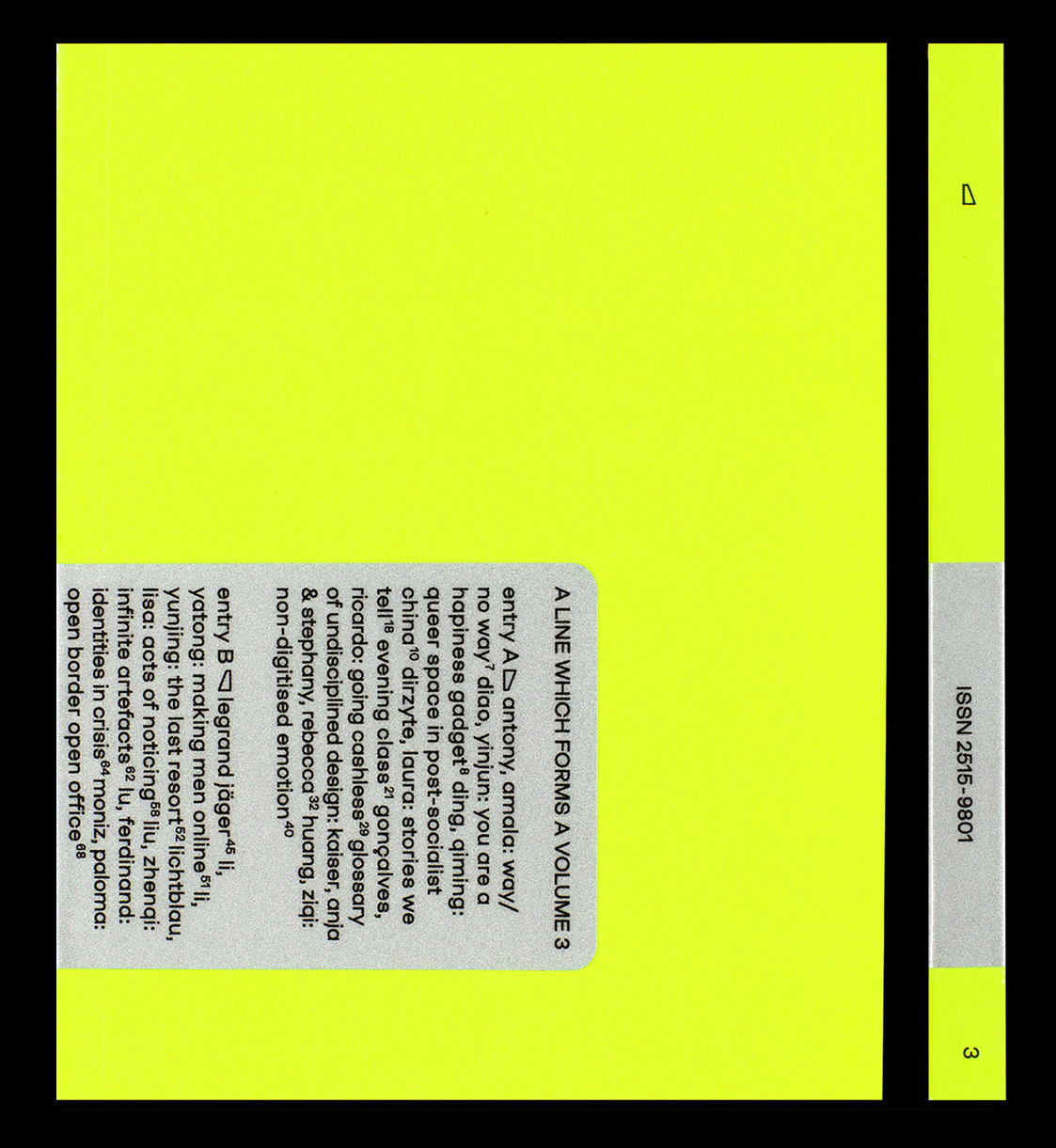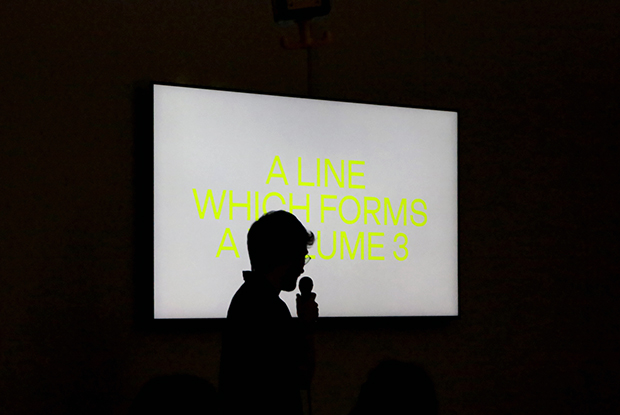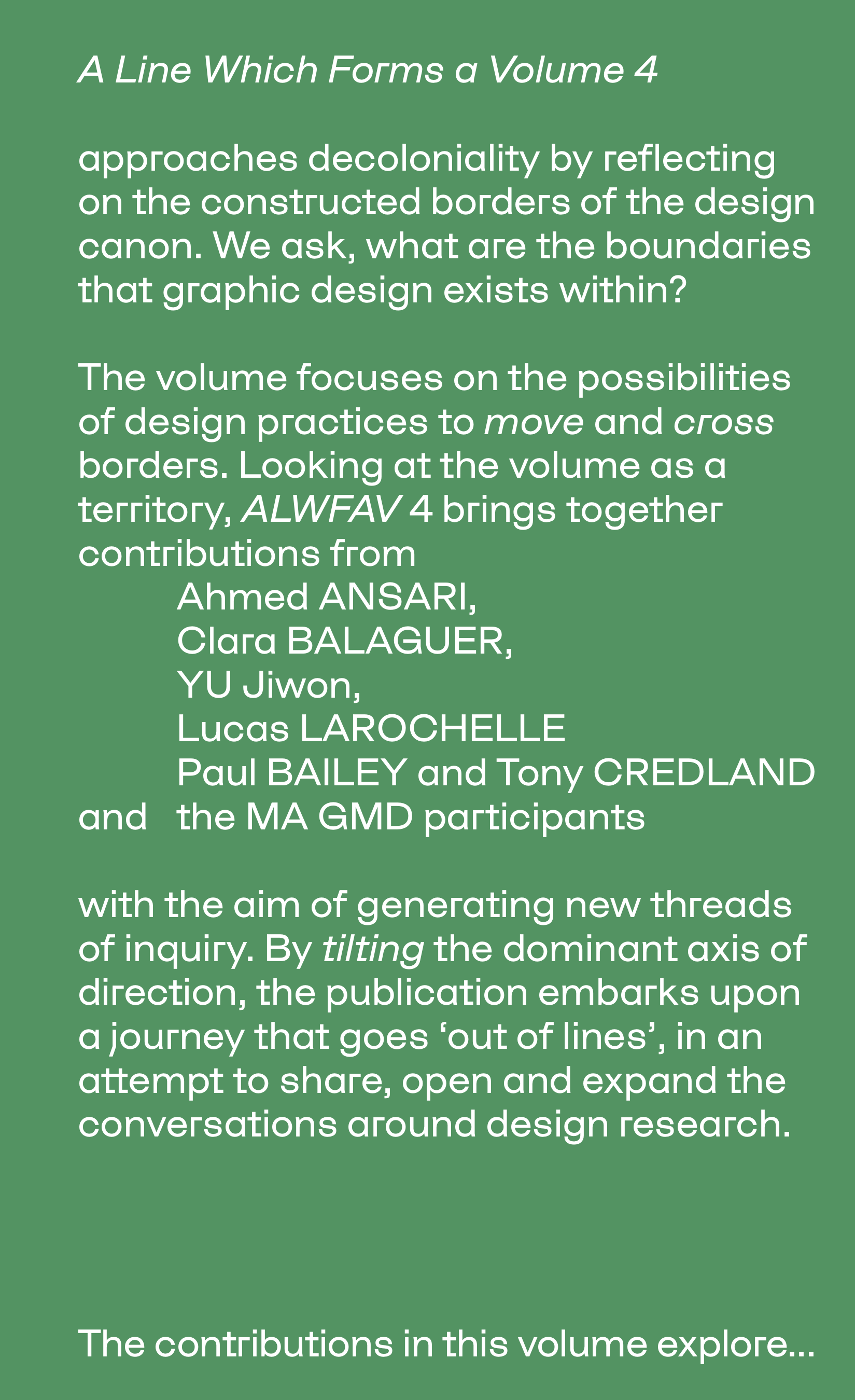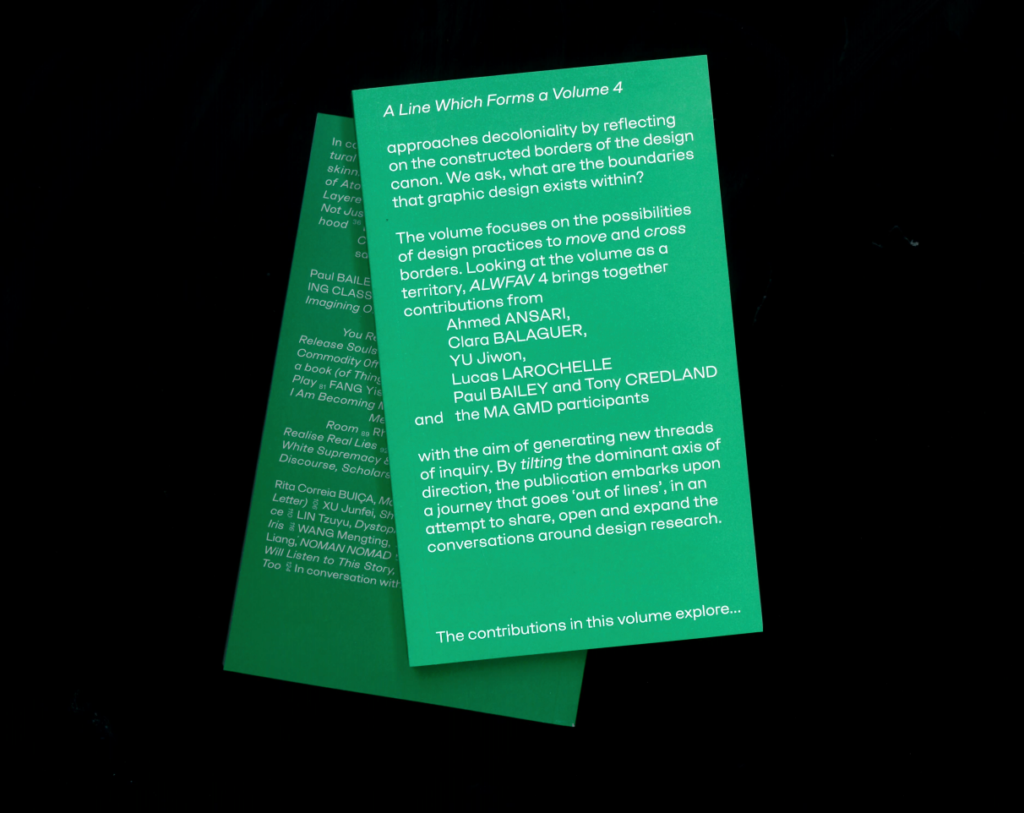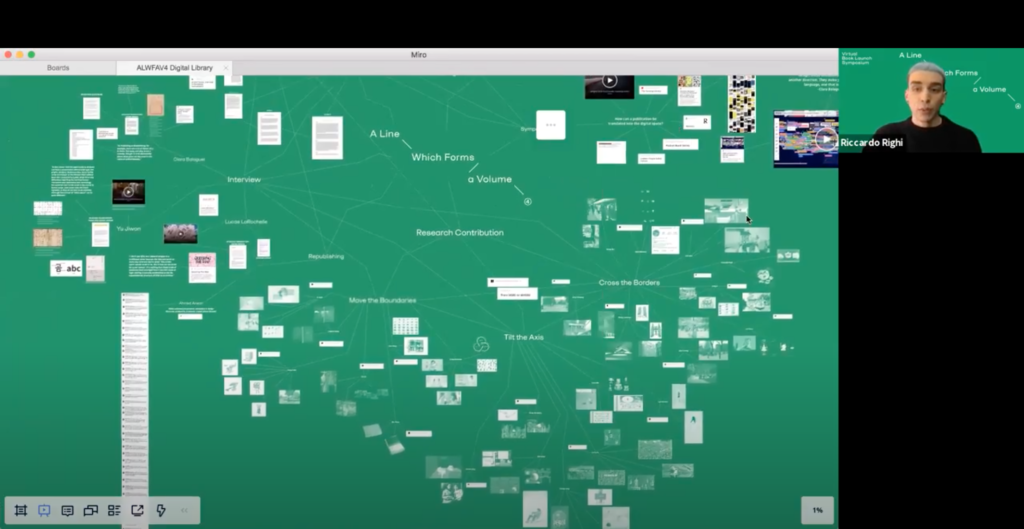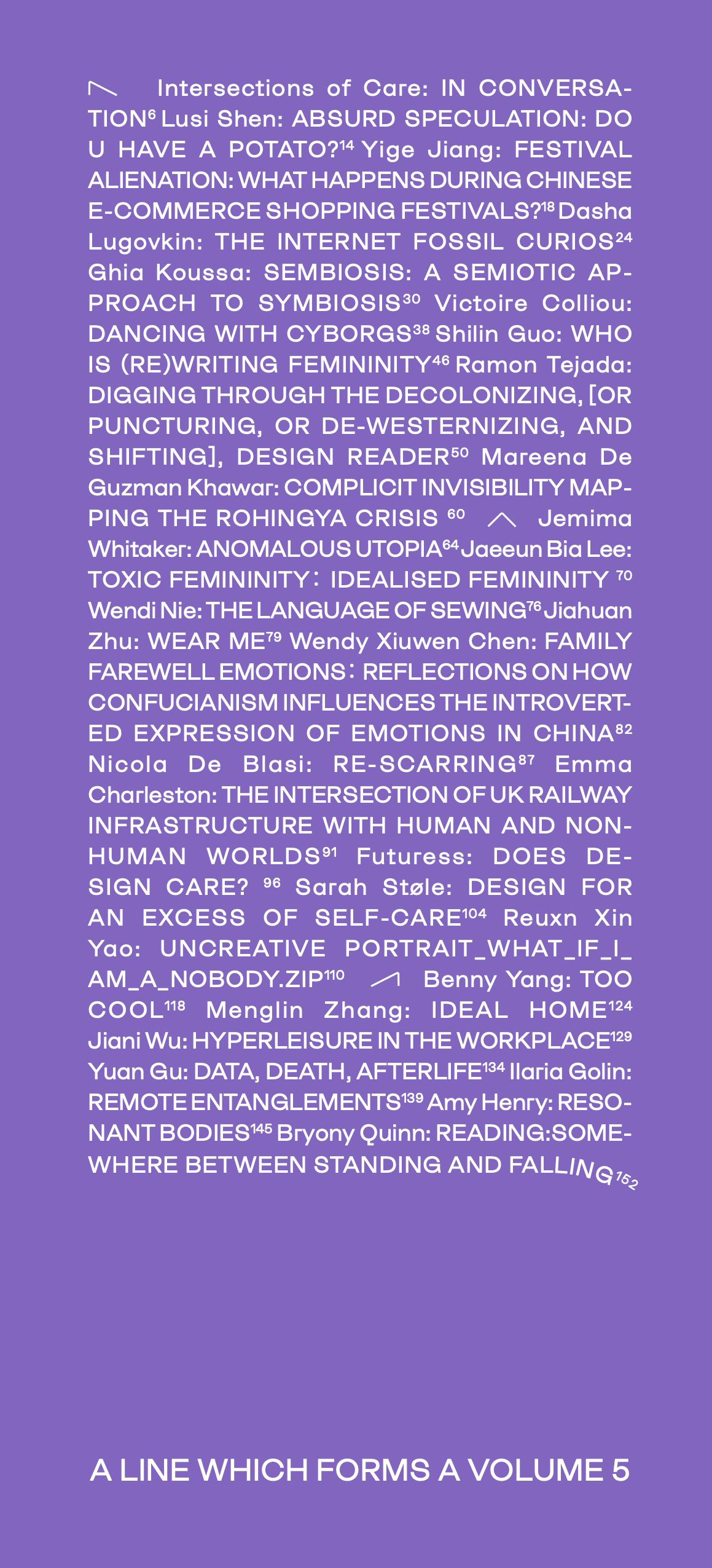A Line Which Forms a Volume is an annual critical reader of graphic design-led research that is authored, edited, designed and made public by MA Graphic Media Design participants at London College of Communication, UAL.
A Line of critical inquiry is a multi-directional thread with a life of its own. It shifts, spins, stretches, splices; simultaneously, in parallel, and apart. It is constantly reshaping and reformulating itself in response to the accelerating context in which graphic design exists. A Volume is both a tangible object and an audible moment in time. A Line joins together many research narratives. It should be read continuously not as sporadic works. A Volume is a space that projects, amplifies, and disseminates. A Line is a question, a conversation, a response. A Volume is the beginning of a collective design enquiry. It is an opportunity to share research in a wider context of design criticism and publishing. A Line feeds a relay process: the design informs the editorial approach, and vice versa. A Line Which Forms a Volume is a publication and symposium of design research from London College of Communication that brings together narrative, messages and meanings.
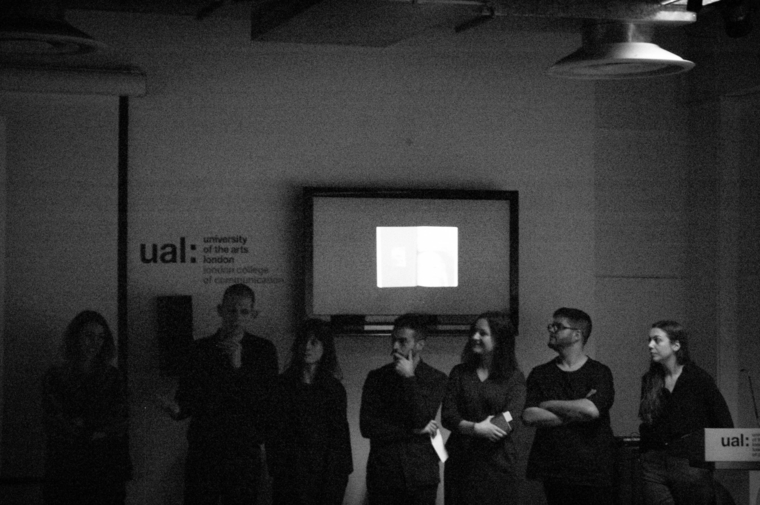
The concept for A Line Which Forms a Volume belongs to the French novelist and essayist, Michel Butor. ‘Listen to someone making a speech’, Butor wrote in his essay ‘The Book as Object’, ‘every word follows one other, precedes one other. As a result, they take their places along a line activated by a meaning, along an axis.’ The best way to store such a line—‘such a “thread”’—he states is to ‘roll it up’. By definition we know that a ‘volume’—from the Latin, volvere—means ‘to roll’, because that was the way written matter was once stored. But there is also volume in the sense of an occupied or enclosed space, and in the quantity or power of sound. This publication lays claim to all of these definitions.
We intend for this research to be public— voluble—and to resonate. As a record, this publication tracks the reeling of ideas between texts, splicing them together with graphic devices and conceptual links to form a continuous line. ‘Writing’s first advantage, as we all know, is that it enables language to last’, explains Butor, ‘leaving accessible to our eyes what our ears would already have missed’. A Line Which Forms a Volume has formed and filled a space for MA Graphic Media Design research at London College of Communication. This is the first issue but not the last. The editorial team, designers and the group of participants who contribute to each issue will roll-over, gain momentum and continue with lines of inquiry, narrative threads, or any other metaphorical unravelling of graphic design research that they choose.
CONTRIBUTORS (in order of appearance)
Kiki Chang, Da Chung, Andy Renmei, Amanda Perry-Kessaris, Louise Courtois, Eugenia Luchetta, Richard Ashton, Bec Worth, Aldo Caprini, Louise Evans, Cate Rickards, Kritika Jhunjhunwala, James Fraser, Suzanne Green, Fatma Al Mansoury, Alessia Muscas, Carlos Romo-Melgar, Laurène Ruimy, Zen Du, Héloïse d’Almeida, Zack Wellin, Stuart Bertolotti-Bailey, Eleanor Vonne Brown, Jack Self, Wayne Daly and Claire Lyon.
STOCKISTS
Currently out of stock.
COLOPHON
Designers
Aldo Caprini
Carlos Romo-Melgar
Editors
Katie Evans
Gabriela Matuszyk
Production Manager
Clare Larsen–Burnett
Editorial team
Héloïse d’Almeida
Zen Du
Louise Evans
Kritika Jhunjhunwala
Cate Rickards
Laurène Ruimy
Zack Wellin
Symposium organisers
Richard Ashton
Bec Worth
Archivist
Cate Rickards
Design Advisors
Wayne Daly
Claire Lyon
Editorial Advisor
Bryony Quinn
Kindly supported by
The Student Engagement and Experience Fund, London College of Communication
ISSN: 2515-9801
